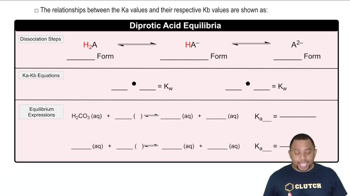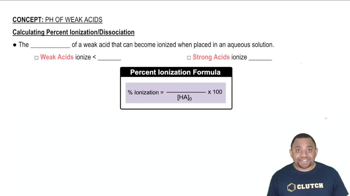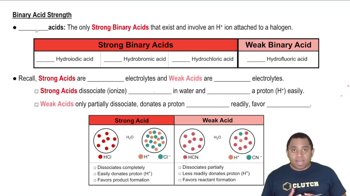Here are the essential concepts you must grasp in order to answer the question correctly.
Diprotic Acids
Diprotic acids are acids that can donate two protons (H⁺ ions) per molecule in an aqueous solution. This characteristic allows them to undergo two distinct ionization steps, resulting in the formation of two different conjugate bases. An example of a diprotic acid is phosphorous acid (H₃PO₃), which can lose two protons to form H₂PO₃⁻ and HPO₃²⁻.
Recommended video:
3 forms of Diprotic Acids
Ionization of Acids
The ionization of acids refers to the process by which an acid donates protons to water, resulting in the formation of hydronium ions (H₃O⁺) and conjugate bases. For diprotic acids, this process occurs in two stages, each with its own equilibrium constant (Ka). Understanding this concept is crucial for predicting the behavior of diprotic acids in solution and their relative strengths.
Recommended video:
Calculating Percent Ionization of Weak Acids
Acid Strength and pKa
The strength of an acid is often measured by its dissociation constant (Ka) and its negative logarithm (pKa). A lower pKa value indicates a stronger acid, meaning it more readily donates protons. For diprotic acids, the first dissociation typically has a higher Ka (lower pKa) than the second, reflecting the decreasing tendency to lose a second proton as the solution becomes more negatively charged.
Recommended video:
 Verified step by step guidance
Verified step by step guidance

